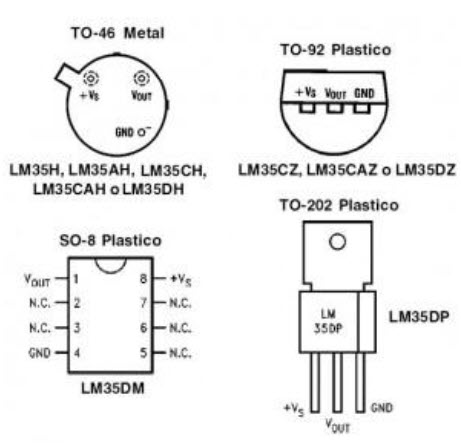LM35 sensor
The LM35 temperature sensor is an electronic component that has a function to convert the temperature scale into an electrical quantity in the form of voltage. The LM35 temperature sensor used in this study is an electronic component produced by National Semiconductor.LM35 accuracy
The LM35 has high accuracy and ease of design when compared to other temperature sensors, it also has a low output impedance and high linearity so that it can be easily connected to special control circuits and does not require further adjustment.Although the voltage of this sensor (LM35) can reach 30 volts, what is given to the sensor is 5 volts, so it can be used with a single power supply provided that the LM35 only requires a current of 60 A, this means that the LM35 has the ability to generate heat (self-heating) from sensor that can cause a low reading error of less than 0.5ºC at 25ºC. LM35 Sensor Structure.
 |
| Picture of LM35 Temperature Sensor |
The picture above shows the shape of the LM35 front view and bottom view. The 3 pins of LM35 indicate the function of each of them, pin 1 serves as a source of working voltage from LM35, pin 2 or the middle is used as an output voltage or Vout with a working range from 0 Volts to 1.5 Volts with an operating voltage of the LM35 sensors that can be used. used between 4 Volts to 30 Volts. The output of this sensor will increase by 10 mV every degree Celsius so that the following equation is obtained: VLM35 = 10 mV/ºC.
And if Vout = 320mV, then the measured temperature is 32 degrees Celsius. This output voltage can be directly fed as input to signal conditioning circuits such as operational amplifier circuits and filter circuits, or other circuits such as voltage comparison circuits and Analog-to-Digital Converter circuits. The basic circuit is sufficient for experimentation or for applications that do not require perfect measurement accuracy.
But not for the actual application. It is evident from the experiments that I have done, the sensor output voltage is not yet stable. At relatively the same temperature conditions, if I vary the supply voltage (I increase or decrease), then Vout also changes. Indeed, logically this seems true, but for instrumentation this is not allowed. Compared to the level of precision, the level of accuracy of the measuring instrument is more important because the measuring instrument should be used as a benchmark for its users. If the value varies for conditions where there is relatively no change, then such a measuring instrument cannot be used.

